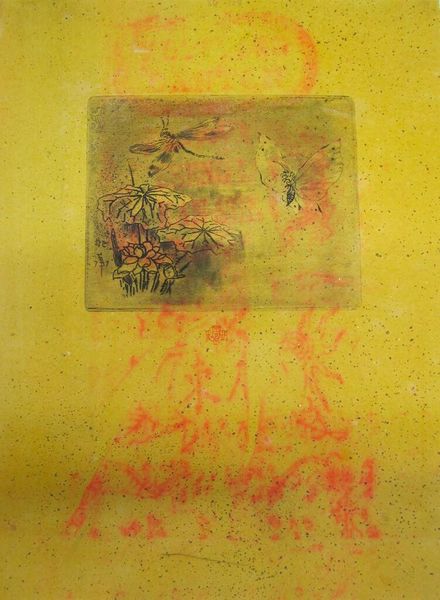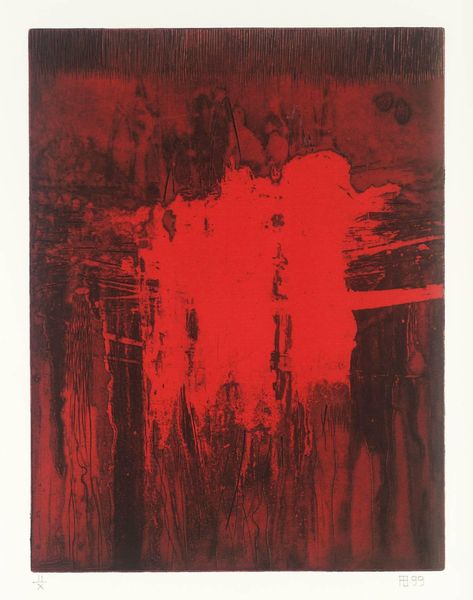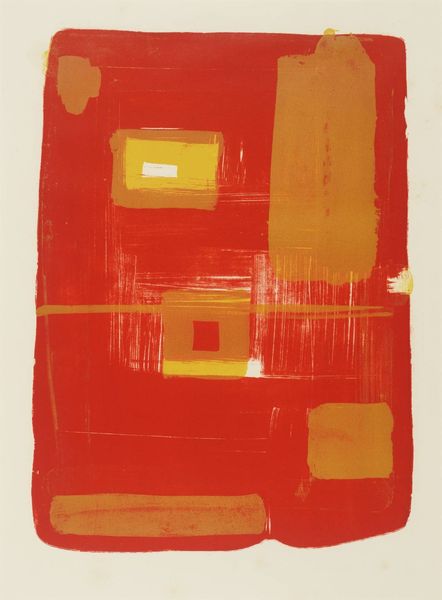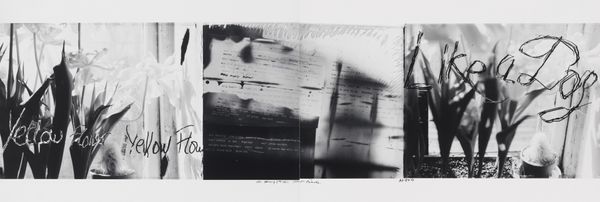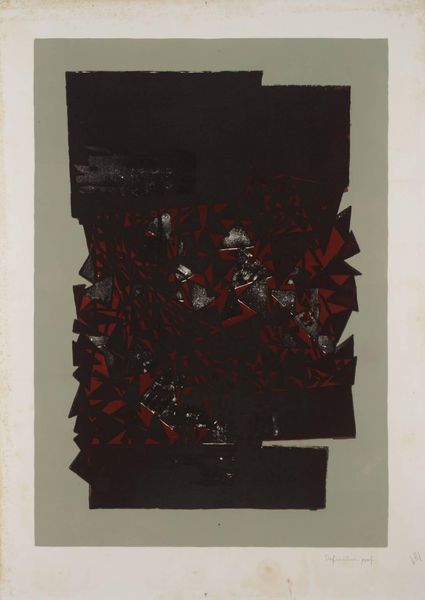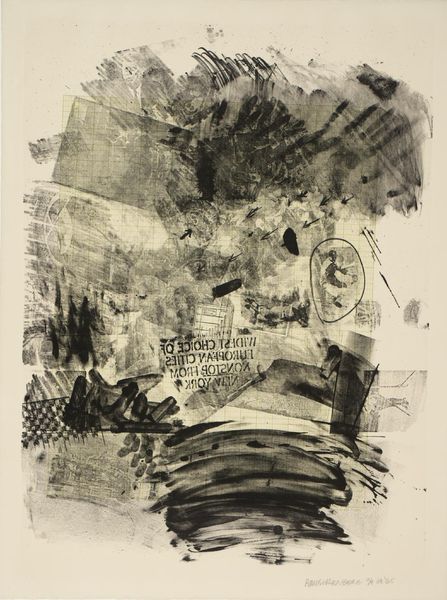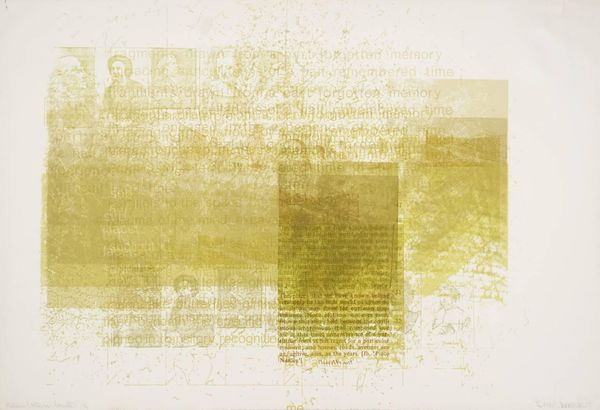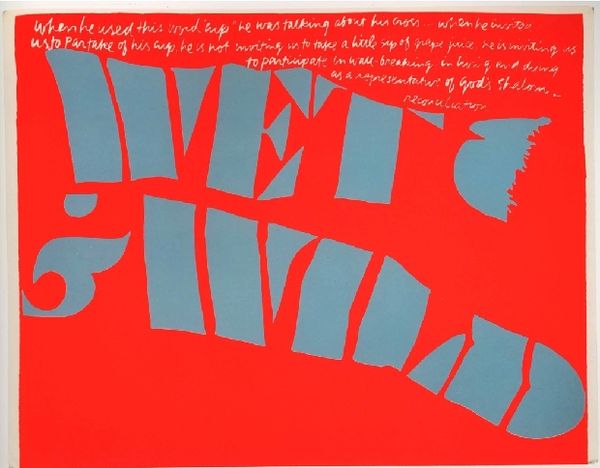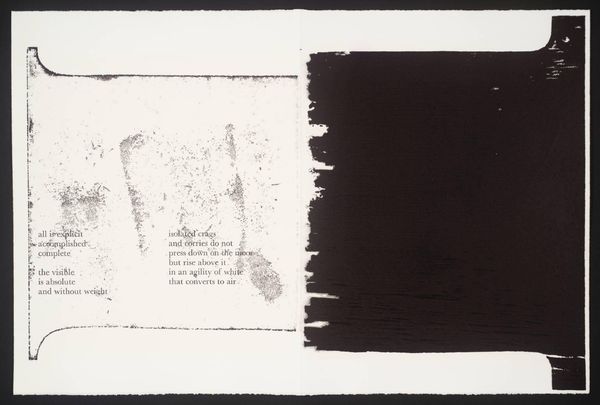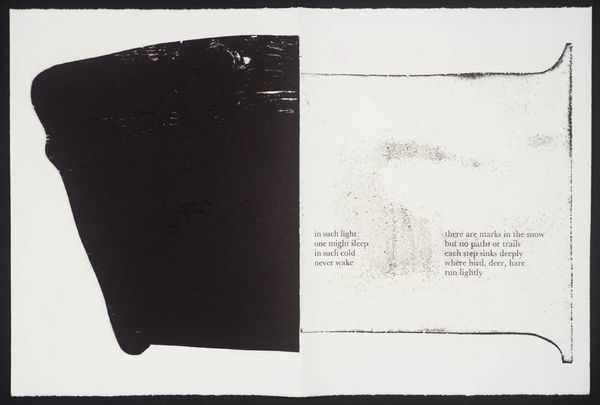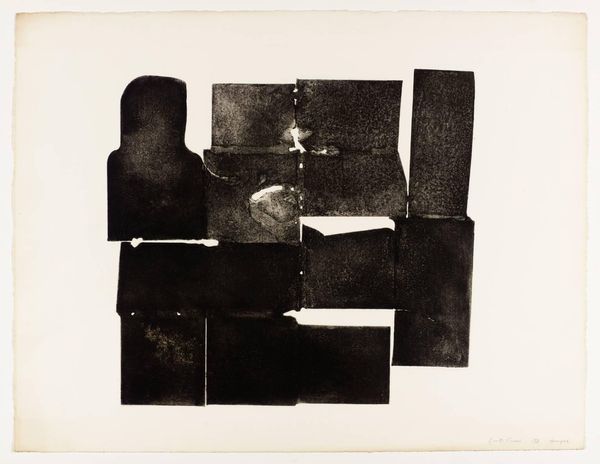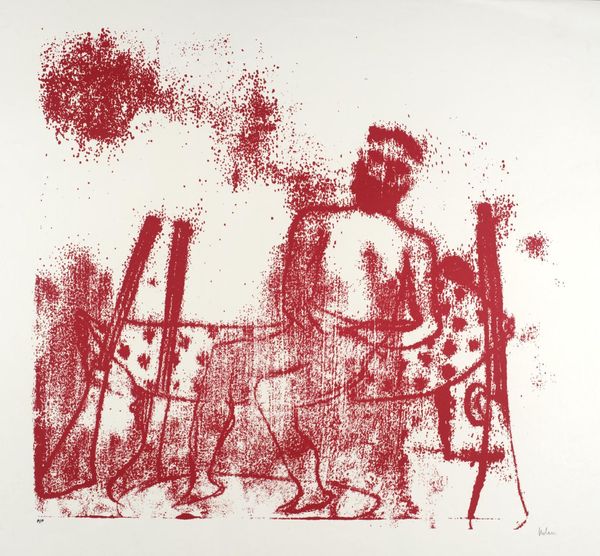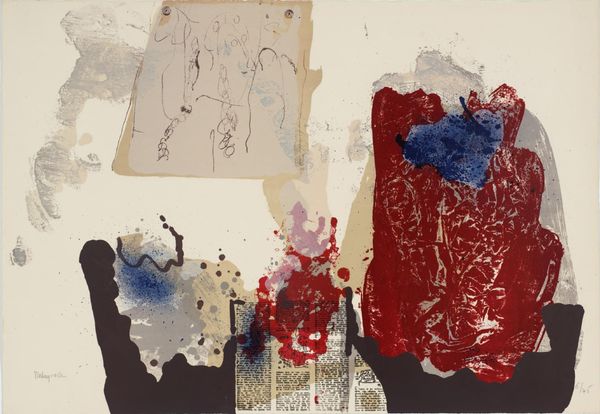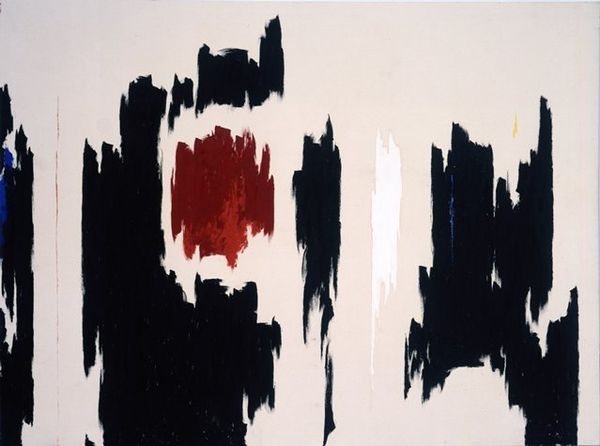
Dimensions: image: 598 x 803 mm support: 792 x 997 mm plate: 605 x 807 mm
Copyright: © John Latham Estate, courtesy Lisson Gallery, London | CC-BY-NC-ND 4.0 DEED, Photo: Tate
Curator: John Latham's "Tadpole-Taffrail" presents us with a screenprint, a burst of red layered with dictionary text and images. Editor: It feels almost like a repressed memory, all washed in red, but there’s something about the tadpole that hints at transformation. Curator: Latham, of course, was fascinated by systems of knowledge and their inherent limitations. The layering of the dictionary extract… Editor: Along with the tadpole and nautical references, it’s a visual deconstruction of language itself, isn't it? A questioning of how we define and categorize the world. Curator: Precisely. Latham’s work encourages us to question the very structures through which we understand reality. Editor: It leaves you pondering the very act of knowing, which I suppose is precisely the point.
Comments
No comments
Be the first to comment and join the conversation on the ultimate creative platform.
